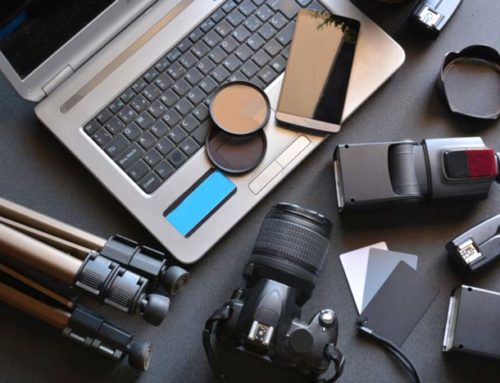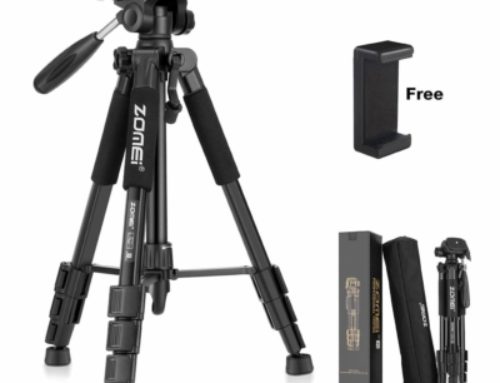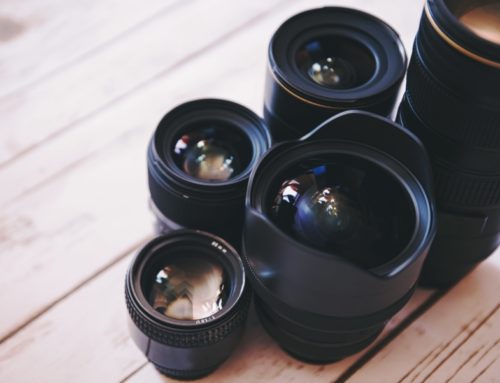Best Travel Cameras 2019 & How to Choose One
If you’re into photography, there’s a good chance that traveling the world with the perfect camera would be a dream job for you. Am I right?
With the right camera and equipment for travel, you’ll be able to bring back inspired photographs that will stand the test of time – for your photography business and to share with family and friends for generations to come.
Incredible travel photos are, without a doubt, the best and most treasured souvenirs you could ever have!
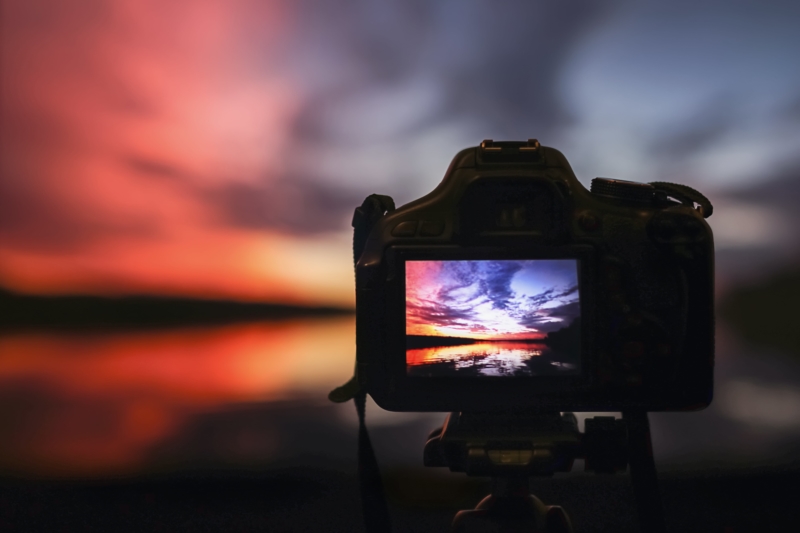
That said, you may be left wondering, “What type of camera would be best for capturing these special moments on my journey?”. We have good news, you’re not alone. And, although there is no easy answer to that question, our camera buyers guide is here to help you narrow down the choices out there – and select the perfect travel camera for your next adventure!
Everyone comes from different means, with changing goals and various reasons for going on such a trip. In this guide, we will offer cameras for people from all walks of life, so we can find a match that meets your individual requirements and budgets.
Travel Camera Features to Consider
Size & weight
Long ago, in a land far away, people assumed that the bigger the camera, the better it is. Well, that is no longer the case. If you’re planning on traveling with your camera, you’ll want something small and lightweight.
Manual settings
As a professional photographer, you’ll want the ability to fully and completely control the settings of your camera. This is the only way to ensure you’re capability to dial in and get that perfect shot, in all kinds of situations.
Megapixels
It is a misconception that the more megapixels your camera has, the better it is. If the pixels themselves are incredibly small, it doesn’t matter how many of them there are. However, if a camera has more megapixels on a large sensor, it will give you higher detail. A camera with this feature will allow you to “crop” your photos without reducing their quality.
Lenses
Interchangeable Lenses
The use of interchangeable lenses saves a photographer time and money, when compared to manually switching lenses out each time a new look is desired.
Fast Lenses
Lens aperture is measured in f/numbers. The lower the number, the better it will perform in low-light situations.
Zoom range
A zoom lens is perfect for someone who is shooting wildlife. The lens itself allows you to get closer to the action without physically being closer. That said, the bigger the zoom capability, the bulkier a camera will be. How much zoom you want varies from person to person, and it just a preference.
HD / 4K Video quality
Generally speaking, most travel cameras will shoot video in HD 1080p. Some of them will even have 4K capabilities. However, if we are being honest, most people won’t have a need for that high level of video quality, unless you’re filming for professional work.
Wifi / Bluetooth
Did you know that some cameras offer their own wifi network? This feature allows a photographer to upload photos to their computer or smartphone instantly.
Weather Proof
This is a big one. Where will you be traveling? Do you need a camera that will hold up against the elements? Certain cameras were made for extreme weather conditions, and will hold up against excessive moisture and dust better than others. Keep this in mind when choosing the right camera for you.
Understanding Camera Sensors
In order to select the perfect camera for you, you’ll need to have a clear understanding of different camera sensors, and how they affect image quality and overall camera size.
Large Sensors
A camera with a large sensor is going to be able to perform better in low-light situations. This is due to the fact that a large sensor can capture more of the picture around you. With a large sensor, you’ll get more detail, allowing you to print your photos larger or crop them smaller without losing any image quality. The biggest downside to a large sensor, is that the camera itself will be large as well.
Small Sensors
Although cameras with a small sensor won’t produce quite as much detail, they will be much more compact. And the more compact the camera is, the better (for a traveling photographer).
What kind of photography will you be focusing on?
Of course, the type of photography you’ll be focusing on will play a part in deciding which camera to purchase. Different cameras will have strengths and weaknesses – depending on what you’ll be using them for.
Will you be focusing primarily on portability in a camera? Or, is weather proof and durability your main focus? Professional high-end image quality? Or, something more reasonably priced? Are you passionate about shooting landscapes? Wildlife, Action Photography, Portraits, Culture Photography or Monuments? These are all factors to consider when looking for a travel camera.
Best Point and Shoot Cameras
Technology has shown us a whole new side to point and shoot cameras. Not only have these cameras improved in quality, but added settings have made them a force to be reckoned with. Point and shoot cameras are pocket-sized cameras with tons of amazing features. Some shoot 4K quality video and have manual settings, just like the more expensive options on the market.
The main difference is in the cameras sensor, as it is built a bit smaller and doesn’t allow for the use of interchangeable lenses.
For amateur travel photographers, a mid-range to high-end point and shoot camera is a great option for you. It provides the optimum mix of portability, power, and won’t burn a hole in your pocket.
Sony RX100 V – Lightweight & Versatile
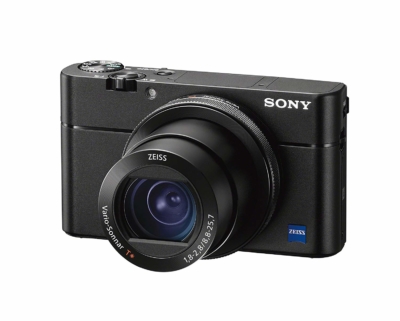
Specs
Weight: 10.6 oz
Zoom: 24-70mm
Sensor size: 1” (13.2 x 8.8 mm)
Megapixels: 20
Pros:
- 4K video
- Extremely fast focusing
- Great for vlogging, flip camera capability
- Build-in flash
Cons:
- Small sensor
- Lens in fixed
- Microphone isn’t very powerful
Canon Powershot G7X – Vlog friendly!
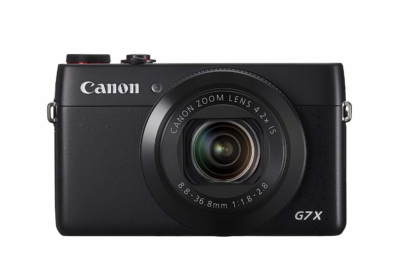
Specs
Weight: 11.15 oz
Zoom: 24-100mm
Sensor size: 1” (13.2 x 8.8 mm)
Megapixels: 20
Pros:
- Includes flip screen for vlogging
- Built-in flash
- Decent microphone quality
Cons:
- Fixed lens
- Small sensor
- Slow at focusing
- 1080p video quality
Best Action Photography Cameras
Over the years, travel photography and video cameras have dramatically transformed! They are tiny, indestructible, and waterproof – ideal for anyone who is on-the-go to record everything!
Do you consider yourself an outdoorsy person? If you do, and you’re planning on hiking, surfing, mountain biking, kayaking, snorkeling, scuba diving, or even cliff jumping during your travels, choosing an action camera may just be your best option. You want to create those epic adventure videos, don’t you?
GoPro Hero 6 – Adventure proof-ed
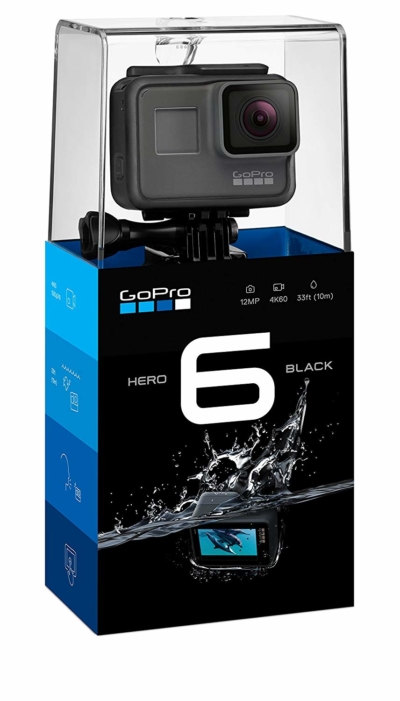
Specs
Weight: 4.1 oz
Zoom: 15-30mm
Sensor size: ½.3” (6.17 x 4.63 mm)
Megapixels: 12
Pros:
- 4K video
- Ultra small in size
- Touch screen
- Waterproof (hey, we said it was aventure proof-ed, didn’t we?)
Cons:
- Smaller sensor
- Limited zoom
- Requires accessories
GoPro Session – The “Mini Cube”
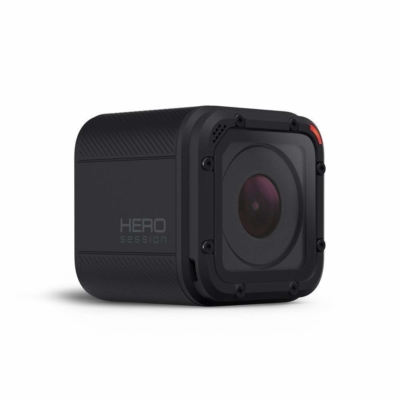
Specs
Weight: 2.6 oz
Zoom: 15-30mm
Sensor size: ⅓.3” (4.54 x 3.42 mm)
Megapixels: 10
Pros:
- Ultra small
- Affordable on any budget
- Waterproof
Cons:
- Small sensor
- Limited zoom
- No screen to review photos
Mirrorless Cameras
Mirrorless cameras are larger in size than a point & shoot, but smaller than a DSLR. These digital cameras are all the rage this season. Many professional photographers are beginning to switch over to these cameras due to their small size, but great ability to produce high-quality images.
These little cameras offer more features than a point & shoot, and have the ability to use interchangeable lenses. They also include a large sensor with better low-light capabilities and attention to detail.
Sony A7 III – Offers both Power and Portability
At the moment, the Sony A7 III is without a doubt the best travel camera money can buy. Sony has been keeping up on new cutting edge technology over the past few years, while other brands are having a hard time keeping up. This camera offers incredible sensor technology, focus speeds, and dynamic range. In addition, it is also cheaper than its competitors. Sony offers specialty models as well.
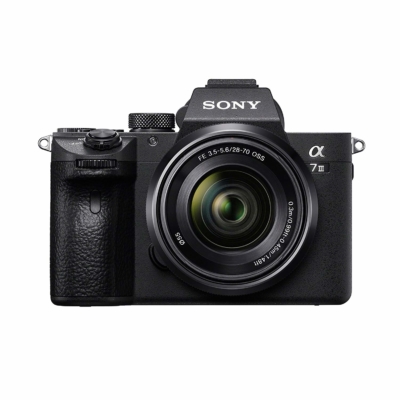
Specs
Weight: 22.93 oz
Zoom: Various lenses – interchangeable
Sensor size: Full frame (35.8 x 23.8 mm)
Megapixels: 24
Pros:
- Full frame sensor
- Internal stabilization
- 4K video quality
- High dynamic range
- Weather sealed body – perfect for the traveling photographer
Cons:
- Lacks swivel screen
- No built-in flash
- On the expensive side
Fujifilm X – T2 – Classic Style
The Fuji X-T2 camera is a fairly popular competitor to the Sony A7 mirrorless camera. This camera is extremely well-made, with rugged all-metal dials which control this camera’s settings. The one downside is that the smaller APS-C crop sensor doesn’t offer a full frame, like the Sony A7. In addition, the Fuji has less power in low-light situations. With fewer focus points, half the battery capacity, and no internal stabilizations.
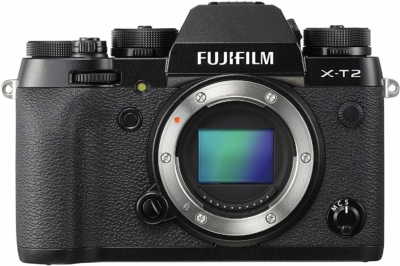
Specs
Weight: 17.88 oz
Zoom: Various lenses – interchangeable
Sensor size: APS-C (23.6 x 15.6 mm)
Megapixels: 24
Pros:
- APS-C sensor
- 4K video quality
- Weather-sealed body for traveling
Cons:
- Lacks a swivel screen
- No built-in flash
- Limited battery life
- No internal stabilization
Sony A6500 – A lot of bang for your buck
Sony A6500 is an even smaller version of Sony’s incredible A7 mirrorless camera (even smaller, can you believe it?!). The biggest difference between the two is that the A6500 sports a slightly smaller APS-C cropped sensor, and doesn’t have quite as much weatherproofing qualities against the rain.
Like the A7, this Sony camera also shoots 4K video quality, and features a touch-screen. Although, this camera has a smaller battery and less low-light capabilities. Expert tip: The older Sony A6000 is almost just as good as it’s new counterpart, and costs about $700 dollars less!
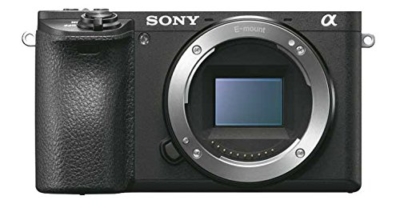
Specs
Weight: 15.98 oz & Megapixels: 24
Zoom: Various lenses – interchangeable
Sensor size: APS-C (23.5 x 15.6 mm)
Pros:
- Extremely portable
- Affordable price
- Built-in flash
- Internal stabilization
Cons:
- Lacks a swivel screen
- Limited battery life
- Button layout
DSLR Cameras
Look: We all know that the features on a DSLR camera are hard to beat.
However, many travel photographers discourage the use of a DSLR camera, due to the fact that they weight a lot more than, say, a mirrorless camera. DSLR’s use a physical mirror instead of an electronic viewfinder, thus the body is larger than on a mirrorless camera.
Taking that into consideration, here are some of the best DSLR cameras for traveling:
Using your Smartphone
Find yourself wondering: “Can I use my smartphone as a travel camera?”
Sure you can! However, you’ll be sacrificing quite a bit of quality due to the fact that sensors in phones are super small. All things considered, if you’re only planning on publishing your images to the web, most people won’t be able to notice the slightly-lower quality.
Another downside to using your smartphone is the obvious lack of a physical zoom feature. Digital zoom doesn’t produce nearly the same results as a physical zoom.
But wait, there’s good news too!
Some smartphones these days feature the ability to shoot in RAW format. For example, iPhone 7+, Galaxy S8, and Google Pixel 2 all include this quality. Plus, they all take amazing photos and video! Smartphones also make great backup cameras, too.
Camera Lenses for Travel Photography
We won’t go deep into camera lenses in this post, as we have other articles with an extensive list of lenses we recommend for travel photography. But, we will give you a few tips on which camera lenses we consider “essential” for any photographer.
To be honest, you don’t need a bunch of different camera lenses to be an amazing, successful photographer. But there are two kinds of lenses we think everyone should own. Both a wide angle zoom and a telephoto zoom will really change the game for any photographer! These two lenses will allow you to capture a mixture of portraits, landscapes, and wildlife – even from a great distance. When packing for a travel photography trip, you want to keep things as light as possible. Keep that in mind when selecting which lenses you want to bring with you.
Drones for Travel Photography
News Flash: Drones are the new “big thing” in the photography and video industry.
If you want to capture images and video in a totally unique perspective, a drone is exactly the tool you need. That said, this probably isn’t the most important travel camera for every trip. It can be hard to pack, and take up a lot of space in your luggage. In addition, some places have strict restrictions on flying personal drones around their territory (for example, US National Parks, and even some countries). Make sure to do your research beforehand to avoid any fines or tickets you may get for flying a drone in a restricted area.
On the other hand, here are a few of the best drones for both beginners and professional photographers:
- DJI Spark – Easy for the beginner flyer, compact size and affordable price.
- DJI Mavic Air or DJI Mavic Pro – Harder to use, but shoots incredible, professional quality video. Perfect for the photographer who is shooting video for another company.
Top Travel Photography Tips
Want to know a secret? Even if you invest in an expensive, top-of-the-line camera, your photos aren’t going to be stellar if you don’t know or understand how to use it.
Educate yourself on how to:
- Shoot in manual mode
- Expose your images properly
- Adjust the white balance
- Frame shots to create the maximum impact
- Pay attention to light and the right lighting situations
- Post-process your photos with good software
Just because you have a nice camera, doesn’t make you instantly a great photographer. The only way your photography will improve, is through practice, patience, and skills you’ll learn over time.
That said, investing your money and time into learning to better your photography skills rather than spending that extra money on a new camera. If your goal is to create remarkable images, the best investment you can give yourself are the skills required to produce such photos.
Most importantly, have fun and enjoy yourself!
